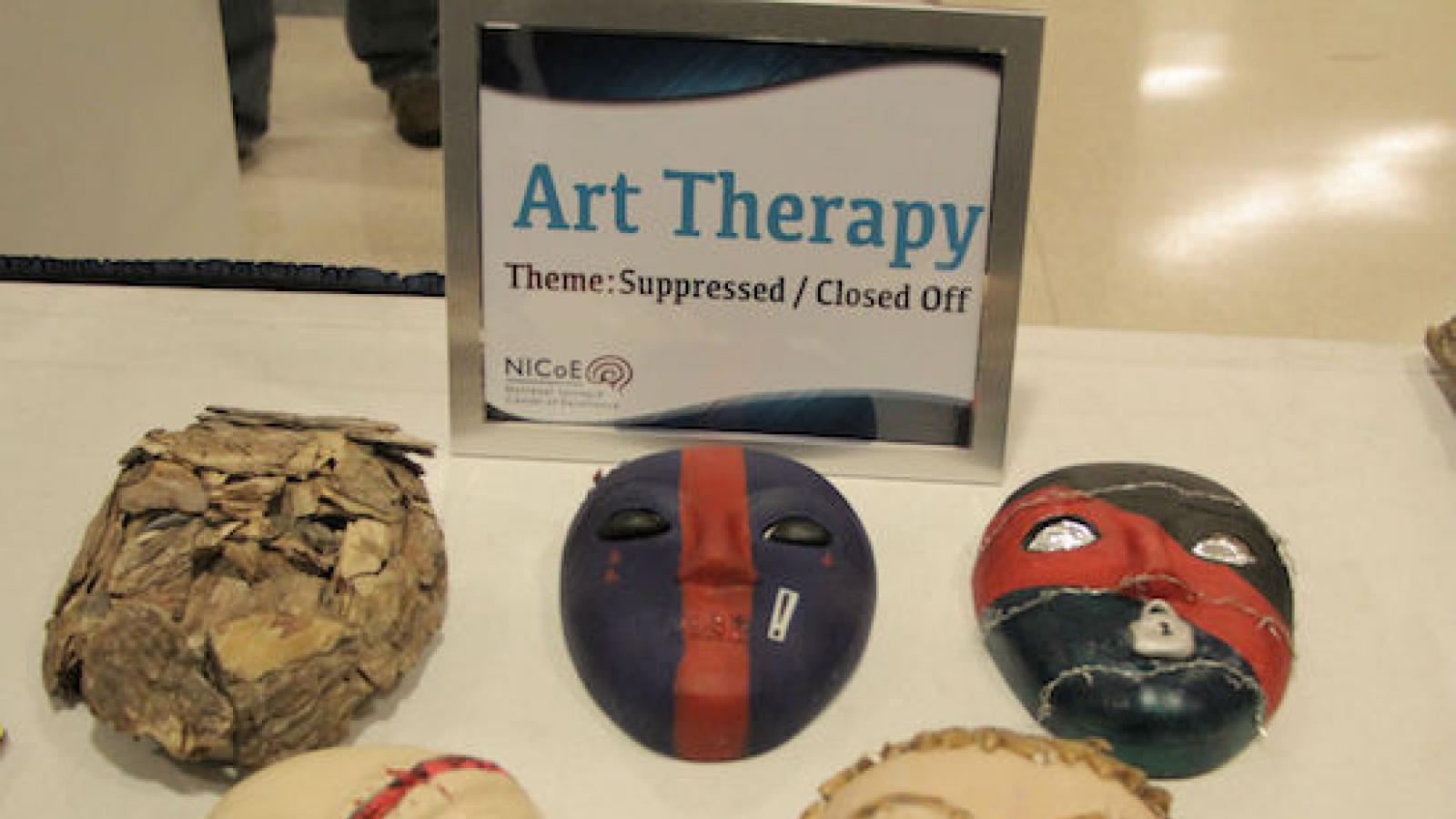“Recovery happens only in community.” — Jonathan Shay, clinical psychiatrist and author known for his treatment of combat trauma suffered by Vietnam veterans
Today, the National Endowment for the Arts unveils an expanded partnership with the U.S. Department of Defense called Creative Forces: NEA Military Healing Arts Network. Creative Forces is a nationwide medical and community healing arts network that serves the unique and special needs of military patients and veterans who have been diagnosed with Traumatic Brain Injury and psychological health conditions, and the caregivers and families who support them. Creative Forces includes 10 new clinical sites where art therapy is part of the medical protocol for returning troops, a community arts component, and a research agenda. The new sites are in addition to the current sites of National Intrepid Center of Excellence (NICoE), part of Walter Reed National Military Medical Center in Bethesda, Maryland and the NICoE Intrepid Spirit-1 at Fort Belvoir in Virginia.
You can learn more of the details here, but first we introduce to you Nolen Bivens, a former U.S. Army General. Bivens is the chair of the National Leadership Advisory Council and a senior policy fellow with Americans for the Arts who recently joined Creative Forces as military and community engagement advisor.
During a military career, many things are monitored and measured. Service members become familiar with routine things like physical fitness tests, training evaluations, and performance assessments, just to name a few. Despite their regularity, there is still room for revelation.
During a late-career, hearing “tune-up,” I sat in a padded sound-proof booth. It was a call-and-response-style test: the technician would send a noise into the booth, and if I could hear it, I would press the button on a handheld clicker. When I came out and was gathering my things to leave, the technician asked, “General, can I share an experience I’ve been encountering with soldiers who had just returned from combat deployments?”
She described getting the test set up and sending them into the booth. The tests would begin and after some back and forth of the buzz and response sequence, the responses would stop. Confused, the technician went over to the booth and found these service members sitting inside crying. She’d asked them what was wrong, and, physically shaken, they each explained that being alone in a room that essentially shut the world off had opened the doors to memories and feelings about their combat experiences that had, until that moment, been held tightly beneath the surface. She encouraged them to seek medical care, but many refused because they feared therapy’s stigma would negatively affect their leadership capability and career.
A routine audio examination had revealed two things: how powerfully military culture influences service members’ behavior and, in the “new normal” of near continuous warfare and family disruption, there were now
—in addition to physical injury
—immeasurable psychological and emotional alarms ringing louder than ever. These would take innovative approaches to address.
Among those innovations is the arts. We’ve been learning more and more about the positive impact of the arts to trauma-healing. Since 2011, the National Endowment for the Arts and the Department of Defense have supported art therapy as part of patient-centered care for troops diagnosed with traumatic brain injury and other psychological health conditions at two medical treatment facilities: NICoE Walter Reed National Military Medical Center and at the NICoE Intrepid Spirit-1, Fort Belvoir in Virginia.
And it’s working. In a survey at the NICoE Walter Reed, 85 percent of military patients said art therapy was helpful to their healing. In addition, military patients consistently rated art therapy among the top four treatments out of more than 40 health interventions.
One overarching value of the Creative Forces program is that it personifies [Jonathan] Shay’s notion that healing occurs within community. The idea of “community” is a dominate attribute of military culture. When one hears a service member, apprehensive about transitioning or retiring from military service, say, “It’s time to return to the ‘real world’,” the term “real world” connotes a feeling that civilian society is somehow alien to their military experience. In an all-volunteer military, where only 0.4 percent of the American population serves, this critical aspect of military culture is not readily discernible by fellow citizens.
The military and arts communities can help each other foster connection, healing, and creativity by leveraging the “community” component. This leveraging also increases the program’s effectiveness, success, and sustainability.
Creative Forces, with its focus on the signature wounds of war and investment in building the evidence that proves the value of the arts across the spectrum of military need, has the potential to raise visibility of other programs and network them in a way that makes them accessible to a wider audience. In military terms, it’s a force multiplier to the existing efforts by artists, arts organizations, local art agencies, schools, businesses, and the military community. It is a means to collaborate for common health and wellness outcomes and with broader efforts like the
National Initiative for Arts and Health in the Military (NIAHM).
Creative Forces fosters grassroots arts and military cultural change that enables our service members to transition from combat to community with the knowledge that when they hit a buzzer, there’s someone outside the sound booth who hears them loud and clear.
Visit the Creative Forces page on arts.gov to learn more about this arts and military partnership program.

